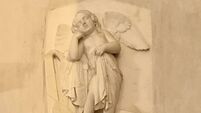Irish otter numbers may be on the rise
But for more than 50 years it has been declining rapidly in western Europe due to persecution, pollution and habitat loss.
In many European countries it is now extinct or very rare, though there are some re-introduction programmes being carried out.














